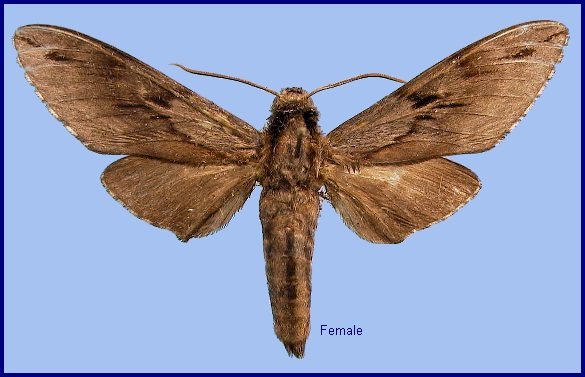
Sphinx centrovietnama Brechlin, 2015, Entomo-Satsphingia 8(1): 16. Type locality: Vietnam, [Kon Tum prov.,] Plato Tay Nguyen, Mt. Ngoc Linh.
Note. There used to be some confusion regarding this species and Hyloicus caligineus brunnescens (Mell, 1922). Mell (1922a) described brown specimens of what he took to be Hyloicus caligineus from northern Yunnan as Hyloicus caligineus brunnescens, a subspecies that he claimed was confined to montane forests. Later, however, he also referred specimens from northern Guangdong and southern Hunan to this subspecies (Mell, 1922b) and stated that Hyloicus caligineus brunnescens was intermediate ('ein Mittelglied') between the dark brown Hyloicus caligineus caligineus Butler, 1877 from Japan and the paler grey Hyloicus caligineus sinicus Rothschild & Jordan, 1903 from 'Zocé' (= Sheshan), Zhejiang. On 30.vi.1995, the first author captured a specimen of Hyloicus caligineus at Hangzhou (Zhejiang) that was transitional in colour between Hyloicus caligineus sinicus and Hyloicus caligineus brunnescens. In addition, there is a brown female in the IZAS from nearby Sheshan (Zhejiang) (the type locality of Hyloicus caligineus sinicus) that matches the description of Hyloicus caligineus brunnescens, while grey specimens of what appear to be Hyloicus caligineus have been captured at 2250m in northern Yunnan (Pittaway & Kitching, 2000). We therefore initially considered it likely that Hyloicus caligineus brunnescens was simply a colour form of Hyloicus caligineus sinicus, analogous to the brown forms that exist in the European species, Hyloicus pinastri Linnaeus (Pittaway & Kitching, 2000).
However, with the description of Hyloicus yunnana (Brechlin, 2015) (from Yunnan), and Hyloicus centrovietnama (Brechlin, 2015) (from Vietnam), the situation with regard to the nomenclature and distribution of Hyloicus caligineus brunnescens, Hyloicus yunnana, Hyloicus centrovietnama and Hyloicus caligineus sinicus became even more confusing. The grey specimens of Hyloicus caligineus mentioned above, which were captured at 2250m in northern Yunnan, have been confirmed as being Hyloicus yunnana. In fact, all individuals of Hyloicus caligineus sinicus from Yunnan and Sichuan mentioned in Pittaway & Kitching (2000) are Hyloicus yunnana. As no individuals of Hyloicus caligineus have ever been confirmed from Yunnan and Sichuan, the brown individuals that Mell (1922a) described from northern Yunnan appear to be the brown form of Hyloicus yunnana. Using DNA barcodes, the Hyloicus caligineus brunnescens-like individuals recorded from NE Laos have been confirmed as being Hyloicus centrovietnama (Ian Kitching, pers. comm. 2018), a species which is now known to extend northwards into southeastern China.
No type material of Hyloicus caligineus brunnescens could be found in CMNH or MNHU; specimens labelled 'type' in CMNH or 'paratype' in MNHU do not have appropriate data. They appear to be the specimens referred to by Mell, 1922, Beitr. Fauna Sinica 2 (Biol. Syst. südchin. Sphingiden): 52-57, that he reared in Guangdong and Hunan Provinces. However, in the section titled "Resting place" Mell, 1922, Beitr. Fauna Sinica 2 (Biol. Syst. südchin. Sphingiden): 56, did refer to a wild-caught female found on a dry path in the foothills of Yunnan that may be interpretable as a type, but its present whereabouts remains unknown. Danner, Eitschberger & Surholt, 1998, Herbipoliana 4(1): 58, erronously gave the type-locality as 'Bergwälder im Norden der provinz Kuangtung'. However, Zolotuhin & Yevdoshenko (2019) finally correctly established Hyloicus yunnana as a junior synonym of Hyloicus brunnescens based on DNA barcode analysis of both greyish and brownish specimens, and study of male genital morphology. This taxonomy is accepted here.
A species of mainly mixed coniferous and evergreen monsoon broad-leaved forests (Jiang, Xiong & Gan, 2022).
China: 14.iv (Guangxi); 28.v (Hainan); 7.vii (Guangdong); 12.ix (Guangxi).
OVUM:
LARVA:
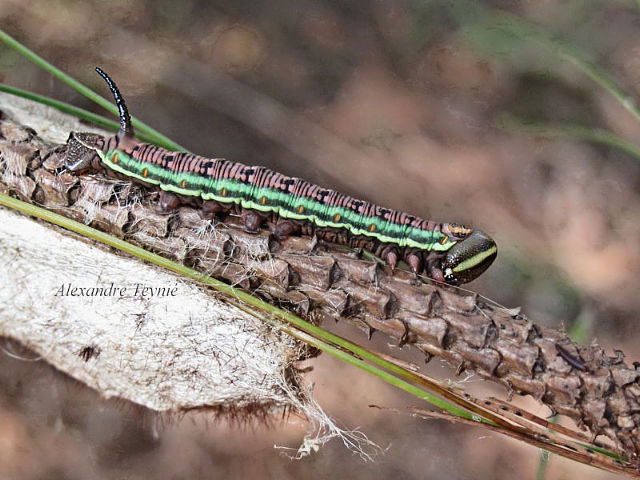
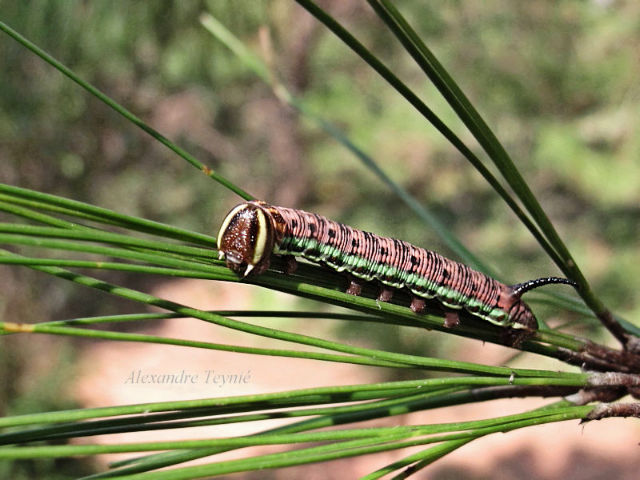
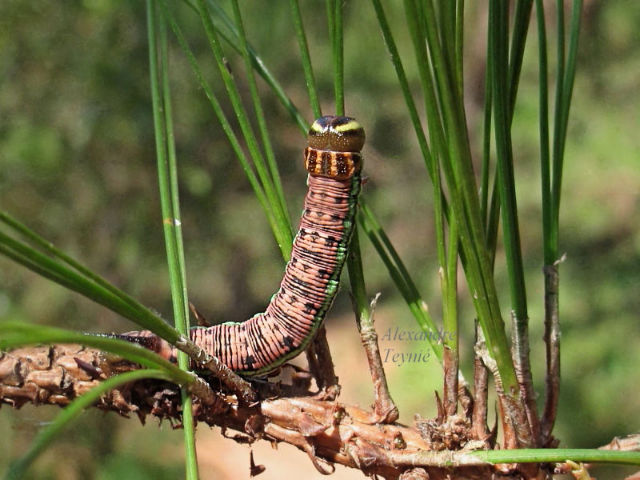


PUPA:
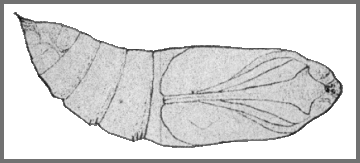
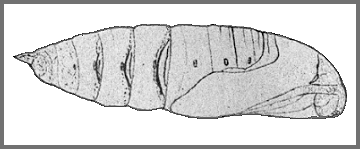
Larval hostplants. In Guangdong, Mell (1922b) recorded 'Hyloicus caligineus brunnescens' on the native pine, Pinus massoniana. This record refers to what is now known as Hyloicus centrovietnama.
Unknown.
China: Zhejiang (Hangzhou); Guangdong (Lian County); Guangxi (Huaping Nature Reserve, Guilin; Gubaotun, Jinxiu County, 850m); Hainan (Diaoluo Shan, Lingshui County).
Endemic to southeastern China (north to Hangzhou), and across/down to northern Laos (near Phonsavan, Xiangkoang Province (Alexandre Teynié/Jean Haxaire, pers. comm. 2018)), northern Thailand (Inoue et al, [1996]) and central/northern Vietnam (Le & Vu, 2024).
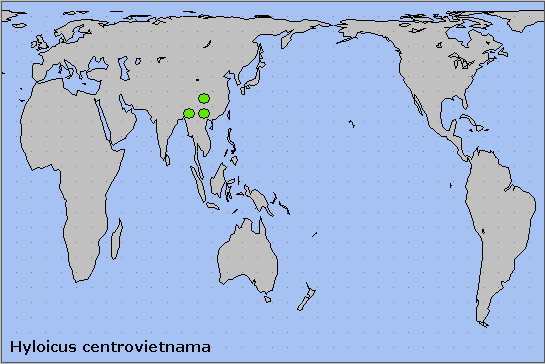
 Return to Sphingidae of the Eastern Palaearctic species list
Return to Sphingidae of the Eastern Palaearctic species list